 Mid-century paperback artists were in tune with the times. 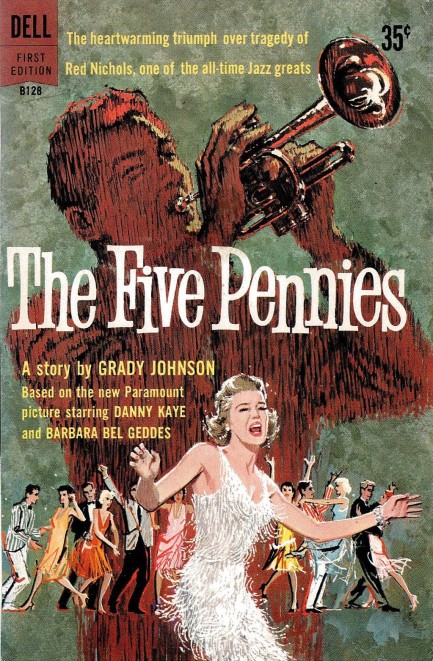 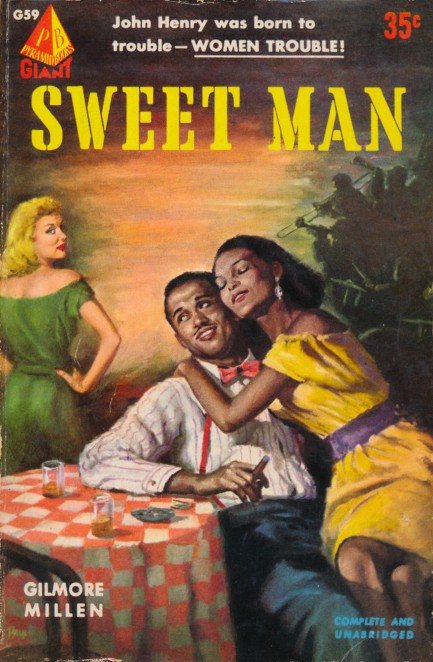 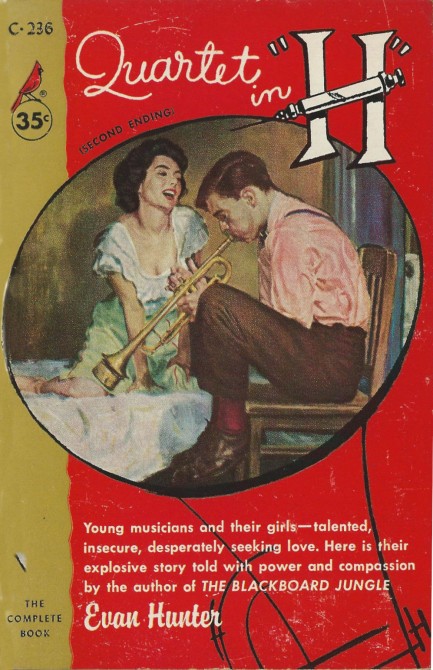 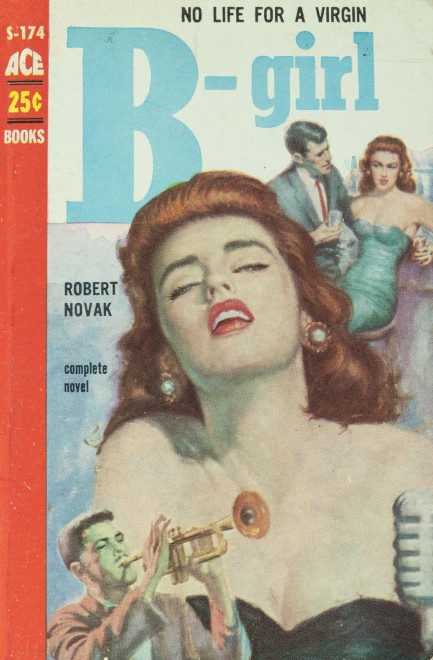 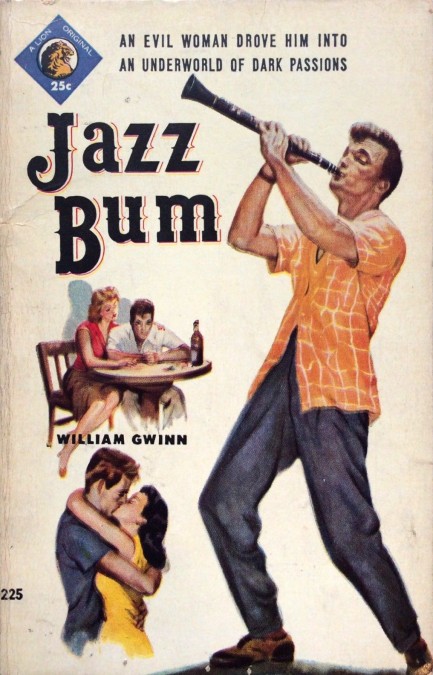 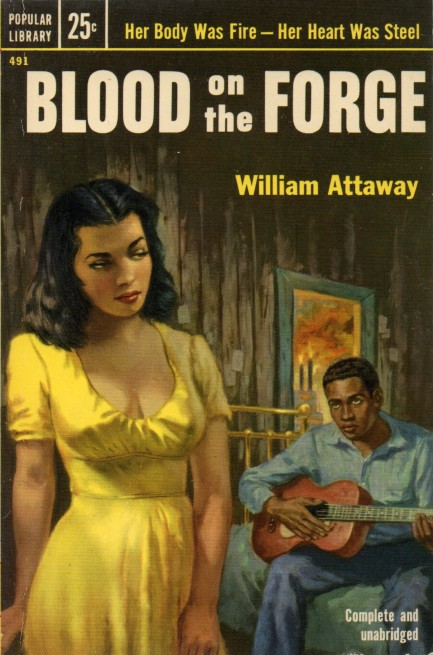  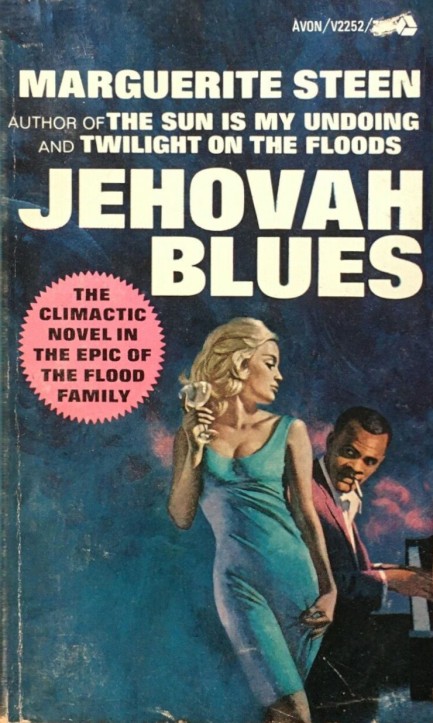 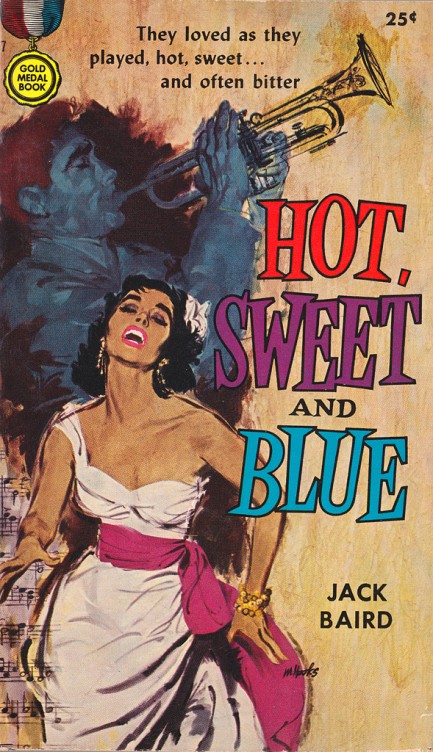 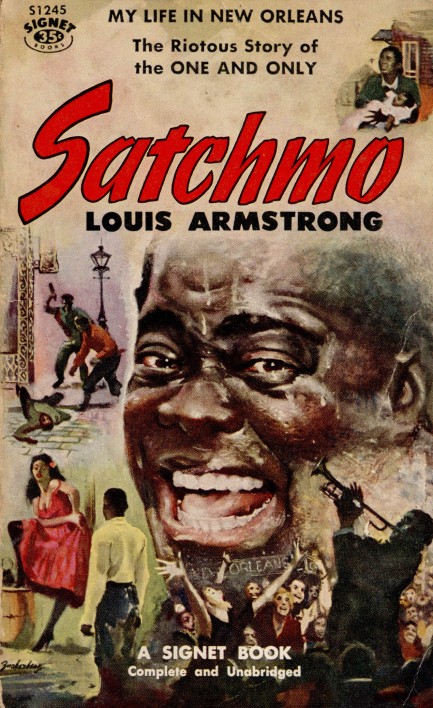  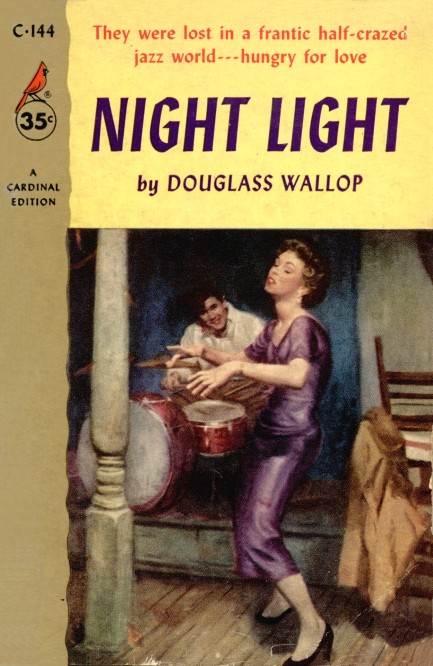 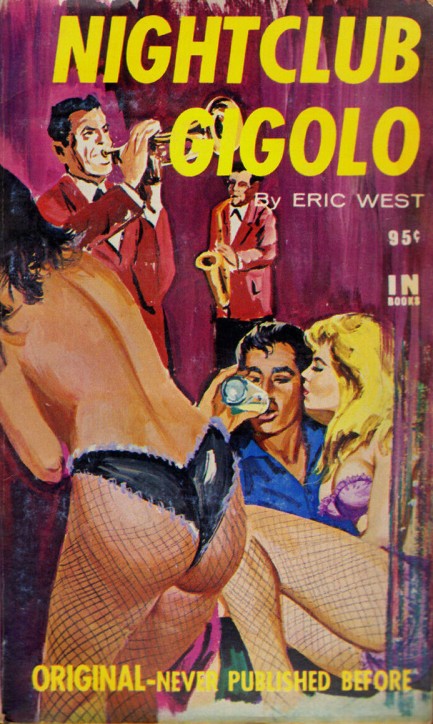 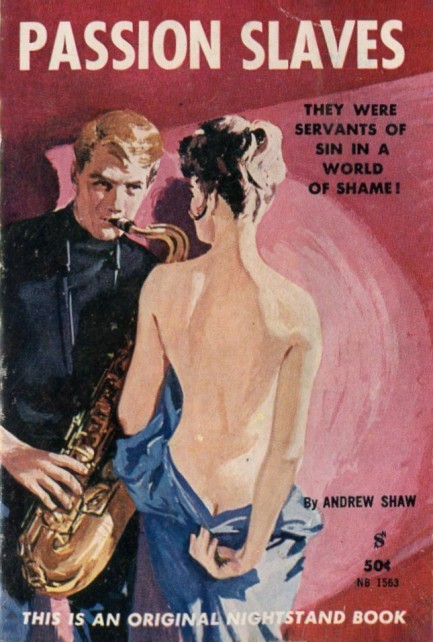 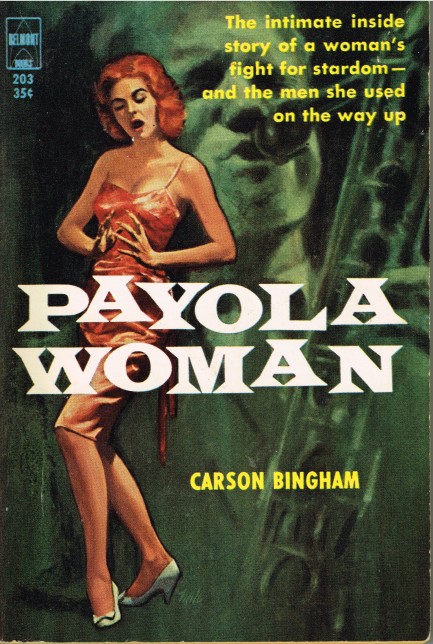 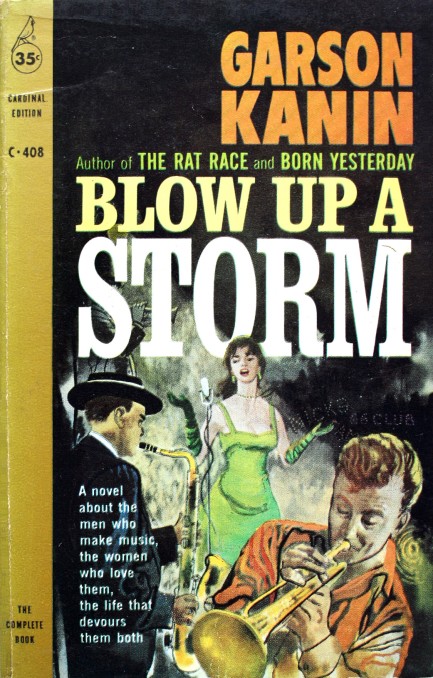 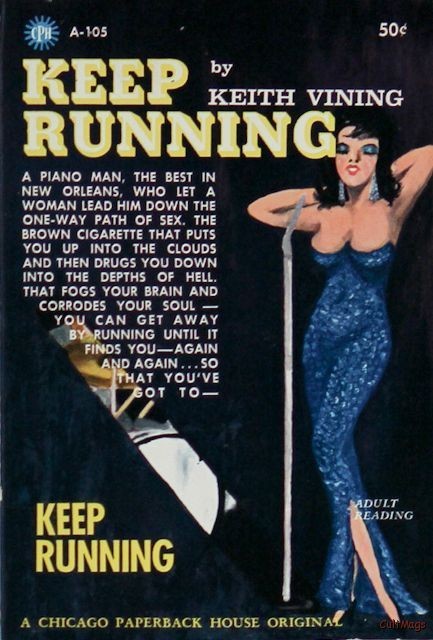 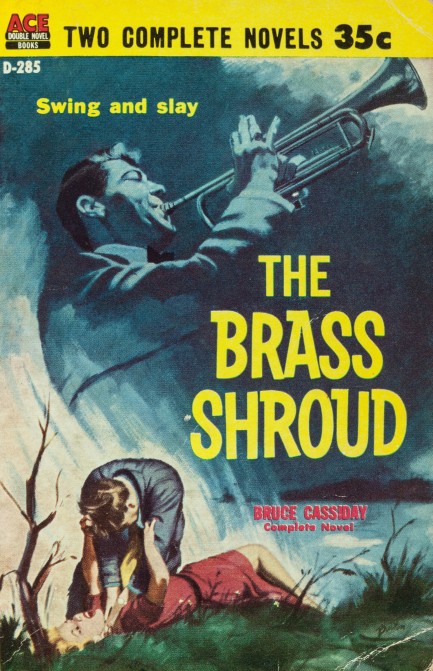 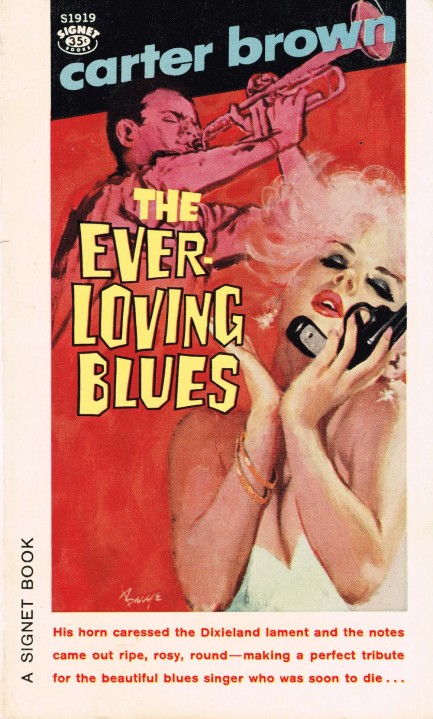  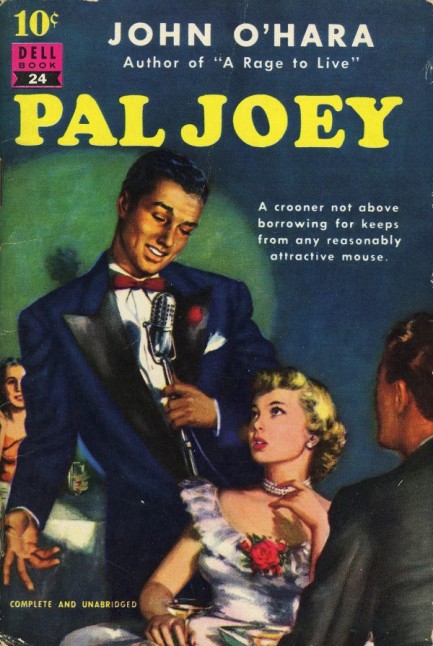  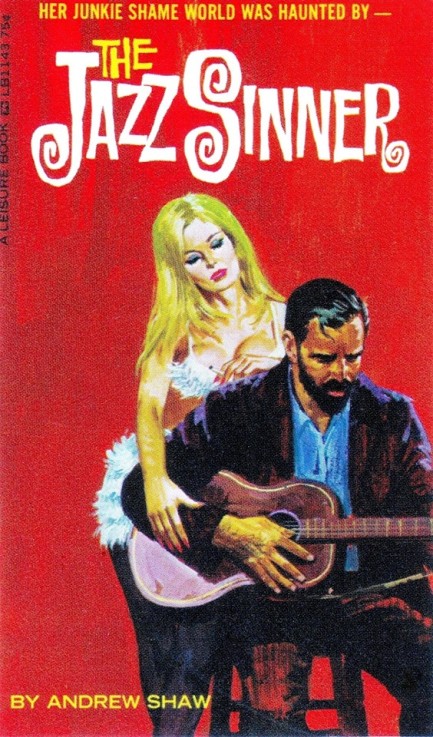 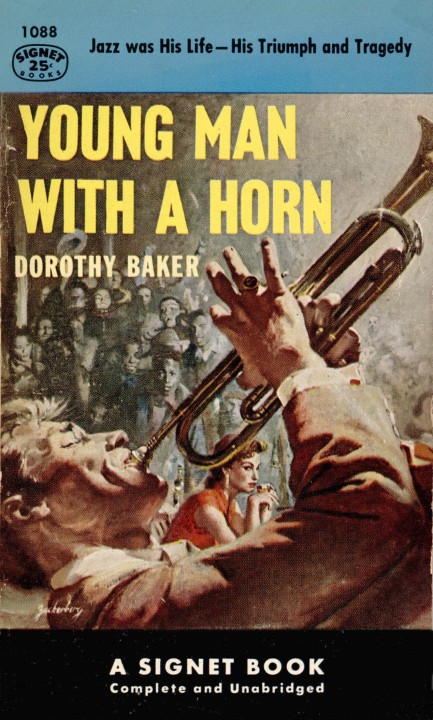 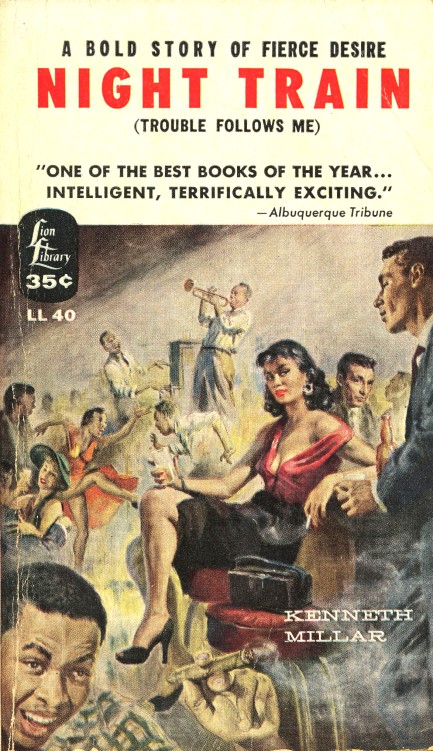 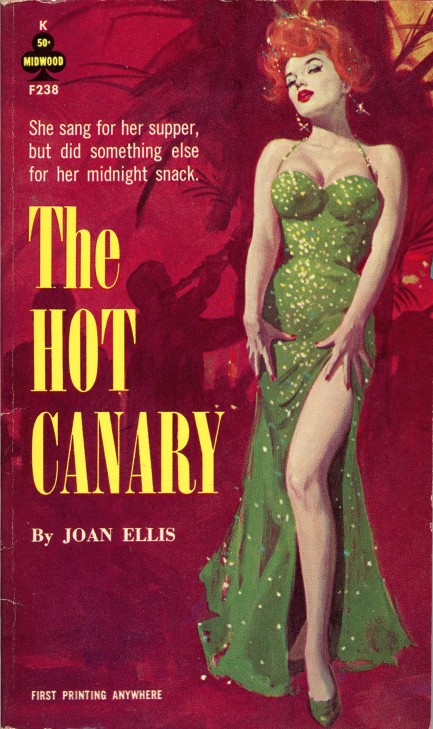 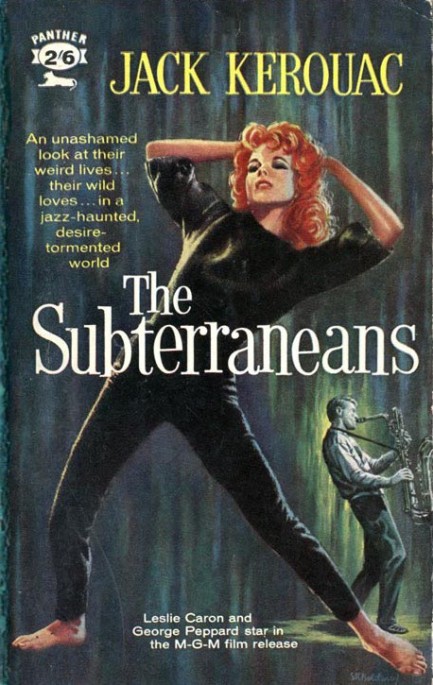
There are numerous jazz themed mid-century paperback covers. The jazz milieu—with its smoky clubs, passionate personalities, and idiosyncratic ways—fascinated readers. Above you see a small collection of fronts that visually reference the uniquely American (black American) art of jazz. We've also added a couple of the many torch singer and crooner covers out there that seem jazzy enough to fit. The artists are Barye Phillips, Stanley Zuckerberg, Harry Barton, Mitchell Hooks, Julian Paul, and others. We've previously posted quite a few jazz covers, and we have a few jazz themed books still to read, so in both cases you won't see those pieces here. We don't keyword for jazz, which means a search for those we've already posted would bring up a welter of books, movies, tabloids, and album covers. Therefore, in order to save you the trouble of wading through all that, here are some links. We'll limit ourselves to ten: here, here, here, here, here, here, here, here, here, and here.
 L.A. stands for Lew Archer in John MacDonald's tinseltown thriller. 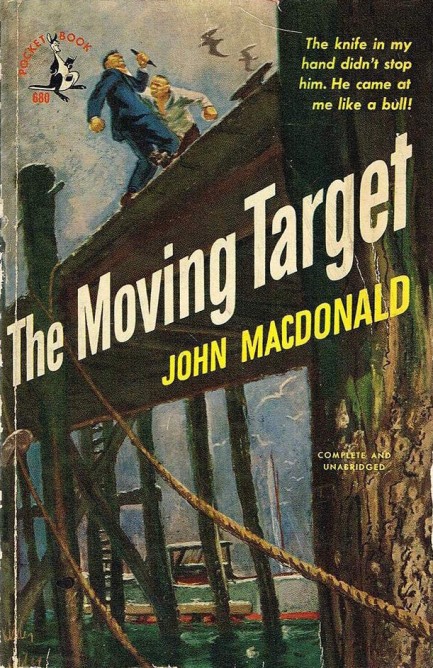
We love this cover art by Harvey Kidder for John MacDonald's, aka Ross MacDonald's first Lew Archer novel The Moving Target. The way the figures are placed at such a remove from the viewer and the text is stretched across the underside of the pier is strikingly different. The book was originally published in 1949 with this Pocket Books paperback coming in 1950, and it stars MacDonald's franchise detective trying to locate a philandering millionaire who's gone missing. The man's wife is more concerned about the possibility of her spouse being on a bender and sharing the family money than she is about foul play, but Archer soon decides that the situation is a kidnapping.
We'd been meaning to read MacDonald for a while. We'd heard that his prose has a Dashiell Hammett vibe and that certainly turned out to be true. Set in and around Los Angeles, it weaves summer heat, wacky mysticism, outsize ambition, and broken dreams together into a tale with great Southern California flavor. And Archer is appropriately road worn: “I believed that evil was a quality some people were born with, like a harelip. But it isn't that simple. Everybody has it in him, and whether it comes out in his actions depends on a number of things. Environment, opportunity, economic pressure, a piece of bad luck, a wrong friend.”
In this world that he's accepted as more complex than he'd like it to be, he navigates using a solid personal code and a very hard skull—both severely tested multiple times. We gather the story is considered unremarkable compared to later Archer novels, but for us it was entirely satisfactory. It satisfied Hollywood too, which made it into a star vehicle for Paul Newman called Harper. Why the name of the detective was changed we can't even begin to guess, but we saw the movie a couple of years ago and it was enjoyable. Below you see a 1959 Pocket Books edition of The Moving Target with Jerry Allison art. More from MacDonald later. 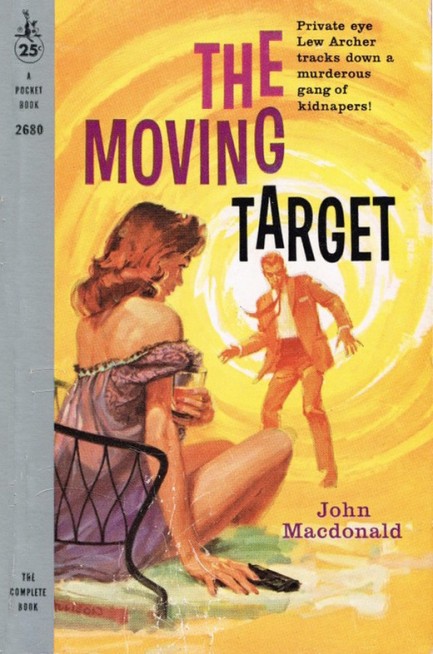
 Give a girl a light? You’ll have to lean down here, though. If I come up there I’ll start flopping around something awful. 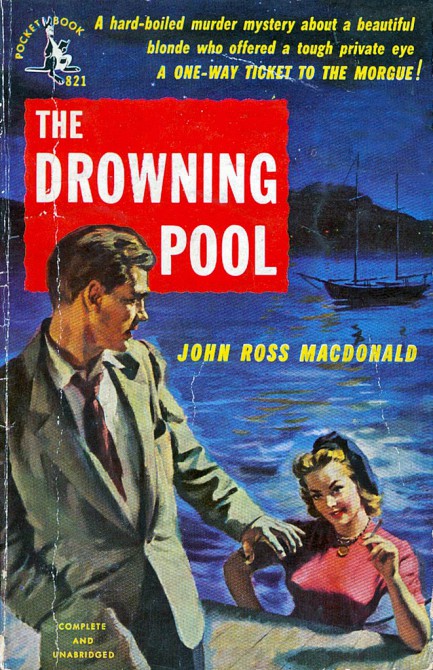
We love this Ray App cover for John Ross MacDonald’s, aka Kenneth Millar's mystery The Drowning Pool because it’s incredibly bizarre. Plot of the book aside (it’s the second Lew Archer novel), there can be only two reasons for the female figure to be positioned as she is—she’s either standing in a rowboat, presumably for the pure pleasure of it, or she’s trying to conceal her mermaid half. She shouldn’t worry about hiding, though—generally guys don’t hang around the docks unless they’re at least a little interested in seafood. 1950 original copyright, and 1951 on the paperback.
 Not so tight sweetie—I just ate eggs. 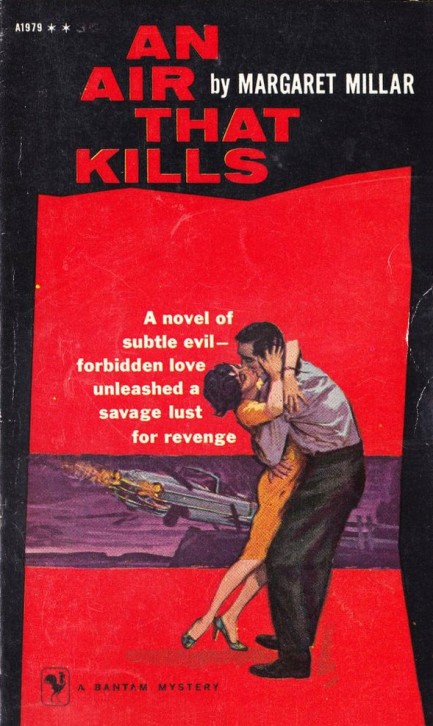
Margaret Millar was a respected writer who won the Mystery Writers of America's Grand Master Award in 1983, and happened to be the wife of acclaimed pulp author Ross MacDonald, aka Kenneth Millar. The air she has in mind here isn’t a physical thing, but rather the emotions of guilt and suspicion. Still though, it’s kind of a funny title, because when you consider how married couples get after a few decades together, it’s easy to imagine old Ross’s reaction every time Margaret let one slip. He probably smirked and said, “Jesus, there really is an air that kills.” Anyway, the book is a mystery in which a married couple’s seemingly stable existence is rocked when the wife reveals that she’s pregnant with another man’s baby. That man soon turns up dead, drowned in his car at the bottom of a lake. However, this isn’t a straightforward puzzler. There are elements of melodrama, and the plot is stretched out over an extended period as we see the couple split and begin to live separate lives. But of course the mystery underpins everything, eventually circling back to center upon the woman’s new child. An Air that Kills is considered by some to be Millar’s best work, and indeed she's considered by many critics to be one of the better writers of her era. She established a career before her husband did, though that doesn't seem to be as widely known as it probably should. In terms of writerly skill, we aren’t really qualified to say whether she's better than her spouse, but we’re sure it made for some interesting discussions and slightly edgy ribbing at the MacDonald/Millar dinner table. We highly recommend this book.
|
 |

The headlines that mattered yesteryear.
2003—Hope Dies
Film legend Bob Hope dies of pneumonia two months after celebrating his 100th birthday. 1945—Churchill Given the Sack
In spite of admiring Winston Churchill as a great wartime leader, Britons elect
Clement Attlee the nation's new prime minister in a sweeping victory for the Labour Party over the Conservatives. 1952—Evita Peron Dies
Eva Duarte de Peron, aka Evita, wife of the president of the Argentine Republic, dies from cancer at age 33. Evita had brought the working classes into a position of political power never witnessed before, but was hated by the nation's powerful military class. She is lain to rest in Milan, Italy in a secret grave under a nun's name, but is eventually returned to Argentina for reburial beside her husband in 1974. 1943—Mussolini Calls It Quits
Italian dictator Benito Mussolini steps down as head of the armed forces and the government. It soon becomes clear that Il Duce did not relinquish power voluntarily, but was forced to resign after former Fascist colleagues turned against him. He is later installed by Germany as leader of the Italian Social Republic in the north of the country, but is killed by partisans in 1945.
|

|
|

It's easy. We have an uploader that makes it a snap. Use it to submit your art, text, header, and subhead. Your post can be funny, serious, or anything in between, as long as it's vintage pulp. You'll get a byline and experience the fleeting pride of free authorship. We'll edit your post for typos, but the rest is up to you. Click here to give us your best shot.

|
|







































































































